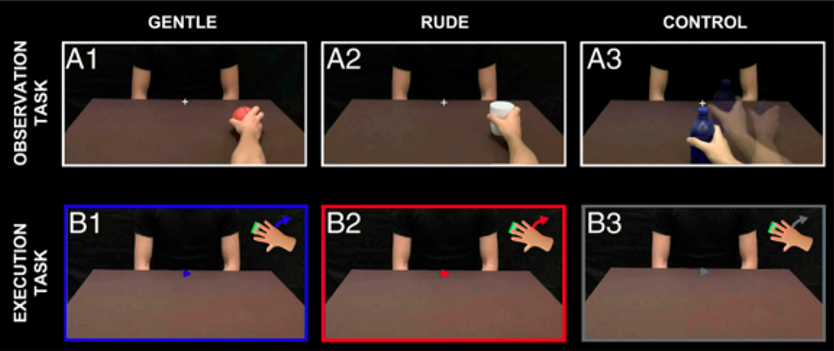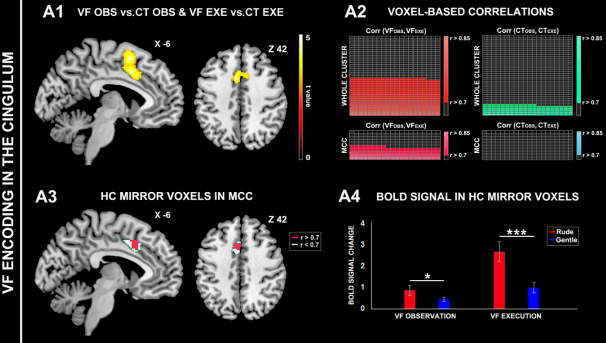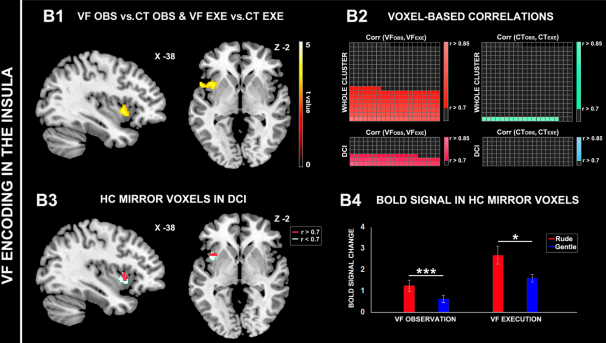Human Interactions
During social interactions, actions can be performed in different forms depending on the emotional state driving them. These forms of action, known as Vitality Forms, play a significant role in human interactions, enabling people to instantly perceive the attitude of others.

Examples from last studies
It has been shown that gentle or rude Vitality Forms expressed by a human agent influence the recipient's motor behavior at a kinematic level.

Frame showing an action with the object in its initial position (A); frame showing the same action in its final position (B). Velocity profiles and trajectories of the actions performed by the male actor. (Di Cesare et al., 2017)
If you want to read more about this topic, click here Article PDF
References
Giuseppe Di Cesare, Giancarlo Valente, Cinzia Di Dio, Emanuele Ruffaldi,Massimo Bergamasco, Rainer Goebel and Giacomo Rizzolatti (2016). Vitality Forms Processing in the Insula during Action Observation: A Multivoxel Pattern Analysis. Front. Hum. Neurosci., 09 June 2016
Through social interaction paradigms we have studied how brain structures are able to activate in response to different Vitality Forms. We found that in a social interaction in which the participant observed an actor passing an object in a rough or gentle manner, the area of the central dorsal insula and anterior cingulate cortex were activated. The activation of the same areas also occurred in a motor condition in which it was the participant himself who passed in a rough or gentle manner.

Experimental paradigm of observation and execution of a bottle pass in a rough or gentle manner (Di Cesare et al., 2021)


Image showing activation of the central dorsal insula and anterior cingulate in a functional magnetic resonance imaging social interaction paradigm. It is shown that the two areas are activated differently for rough and kind acts (Di Cesare et al., 2021)